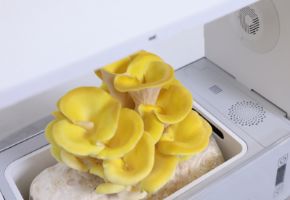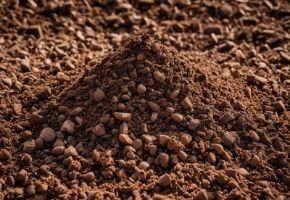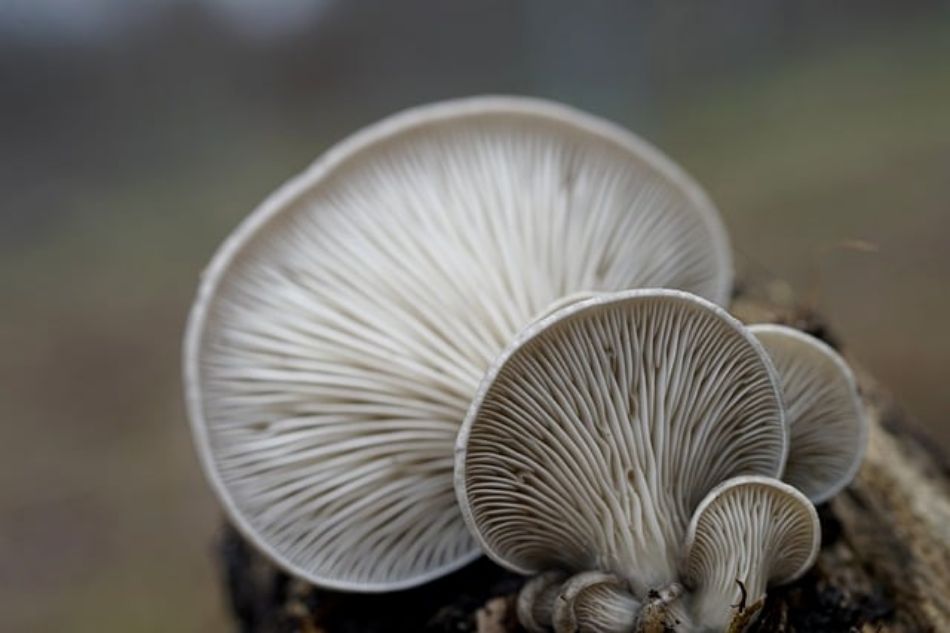Welcome to NatureNext, your go-to source for home mushroom cultivation! Today we introduce you to Pleurotus Ostreatus, also known as the oyster mushroom, tree oyster, or hiratake. This mushroom is not only delicious and versatile in the kitchen, but it is also a true ally for health and the environment. Let's discover everything there is to know about this extraordinary species and how to cultivate it with our grow box.
Characteristics of Pleurotus Ostreatus
Appearance and morphology
Pleurotus Ostreatus is distinguished by its characteristic oyster-shaped cap, which can range from white to gray, to dark brown. The cap is convex in the early stages of growth, then flattens over time. The gills are dense and decurrent, cream-white in color, while the stem is short and often lateral or eccentric. The flesh is firm, white, and has a sweetish taste, with an aroma reminiscent of fresh flour or rose.
Nutritional properties and benefits
Pleurotus Ostreatus is rich in proteins, fibers, vitamins (especially B and D groups), and minerals such as iron, potassium, and phosphorus. It is known for its anti-inflammatory, antioxidant, and cholesterol-lowering properties. Additionally, it is a low-calorie food, ideal for those following a balanced diet.
Natural habitat and distribution
Where it grows in nature
Pleurotus Ostreatus is a saprophytic fungus that grows on dead or dying hardwoods like poplars, willows, and mulberries. It is widespread in many temperate and subtropical forests around the world, including Europe. In Italy, it is commonly found in woods during autumn and winter, often in large colonies forming a shelf-like arrangement on trunks.
Distribution in Europe
In Europe, Pleurotus Ostreatus is particularly widespread in central and southern regions, where climatic conditions are favorable for its growth. It can be found in countries like Italy, France, Spain, and Germany, both in plains and mountains.
Cultivation requirements
Ideal conditions
To cultivate Pleurotus Ostreatus at home, it is important to recreate the conditions of its natural habitat. This mushroom prefers temperatures between 15 and 20°C and a relative air humidity of around 90%. The light should be indirect, avoiding direct sun exposure, and the environment should be well-ventilated to prevent carbon dioxide buildup.
Cultivation substrate
The ideal substrate for cultivating Pleurotus Ostreatus consists of straw, sawdust, or hardwood logs. Before inoculating the mycelium, the substrate must be sterilized to eliminate any contaminants. Once prepared, the substrate is inoculated with the mycelium and maintained under controlled humidity and temperature conditions.
Problems and solutions
Contaminations and pests
One of the main issues in cultivating Pleurotus Ostreatus is contamination by molds or other fungi. To prevent this problem, it is essential to thoroughly sterilize the substrate and maintain a clean environment. Additionally, it is important to regularly monitor the cultivation to identify any signs of contamination and intervene promptly.
Environmental conditions
Another challenge can be maintaining ideal environmental conditions. Too high or too low temperatures, insufficient or excessive humidity, and poor ventilation can compromise mushroom growth. Using a thermometer and hygrometer to monitor the environment and adjusting ventilation and humidity can help maintain optimal conditions.
Home cultivation with the NatureNext Grow Box
Advantages of the Grow Box
The NatureNext grow box is designed to simplify the cultivation of Pleurotus Ostreatus at home. It includes everything needed to start: sterilized substrate, high-quality mycelium, and detailed instructions. With our grow box, you can enjoy fresh and nutritious mushrooms directly at home, without the need for special equipment or advanced skills.
Instructions for use
- Substrate preparation: follow the instructions to hydrate and prepare the substrate included in the grow box.
- Mycelium inoculation: evenly distribute the mycelium over the prepared substrate.
- Environmental conditions: place the grow box in a location with indirect light and maintain the temperature between 15 and 20°C. Mist water to keep humidity at 90%.
- Monitoring and harvesting: regularly check the growth of the mushrooms and harvest them when the cap is well developed and the edge begins to straighten.
A rewarding experience
Cultivating Pleurotus Ostreatus with the NatureNext grow box is a rewarding experience that will allow you to discover the fascinating world of mushrooms. Not only will you have a healthy and tasty food at your disposal, but you will also contribute to a more sustainable environment. What are you waiting for? Start your mushroom cultivation adventure with NatureNext today!
The fungal kingdom is a universe in continuous evolution, with new scientific discoveries emerging every year about their extraordinary benefits for gut health and overall well-being. From now on, when you see a mushroom, you will no longer think only of its taste or appearance, but of all the therapeutic potential it holds in its fibers and bioactive compounds. ✉️ Stay connected - Subscribe to our newsletter to receive the latest studies on: Nature offers us extraordinary tools to take care of our health. Fungi, with their unique balance between nutrition and medicine, represent a fascinating frontier we are only beginning to explore. Continue to follow us to discover how these extraordinary organisms can transform your approach to well-being.Continue your journey into the world of fungi










